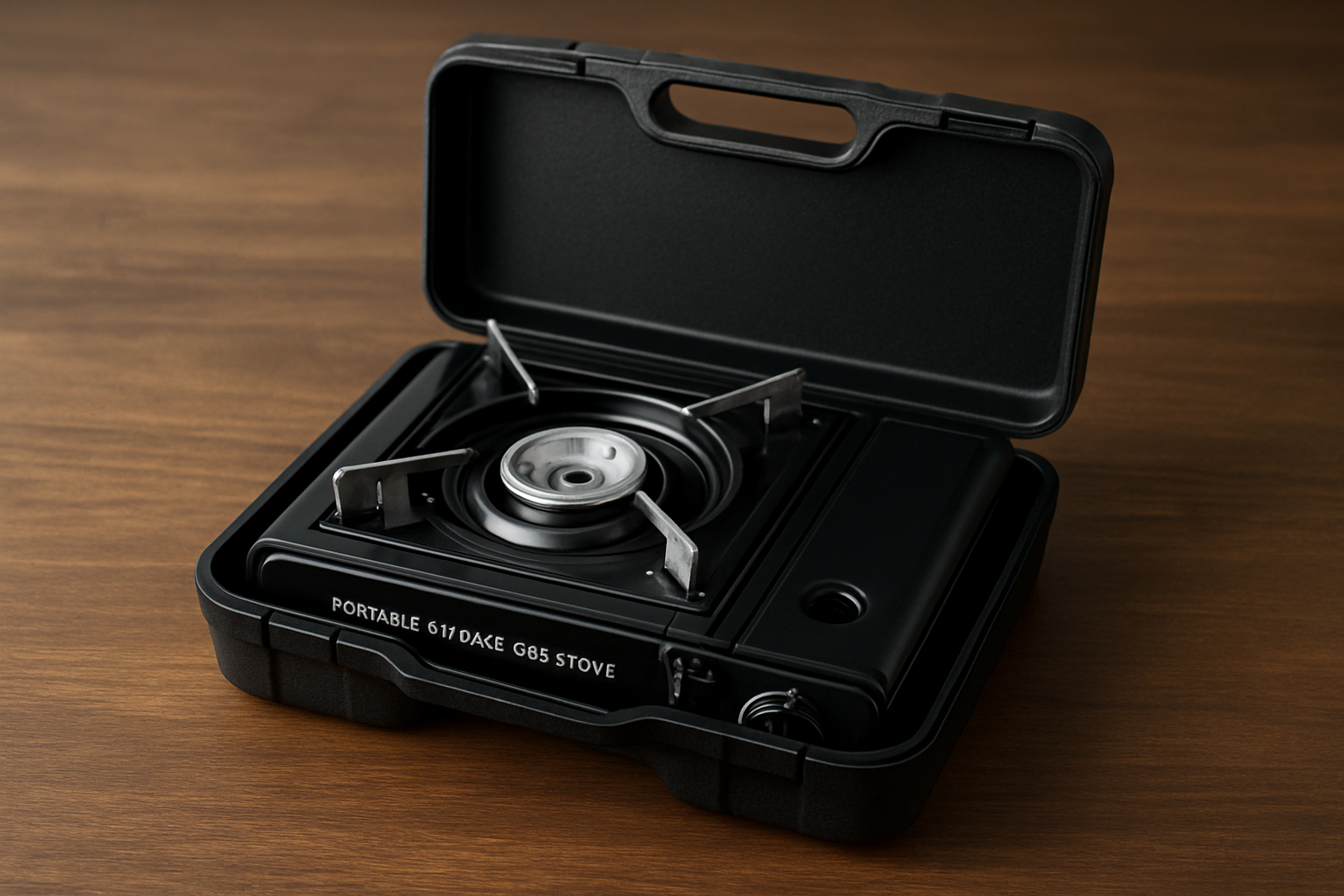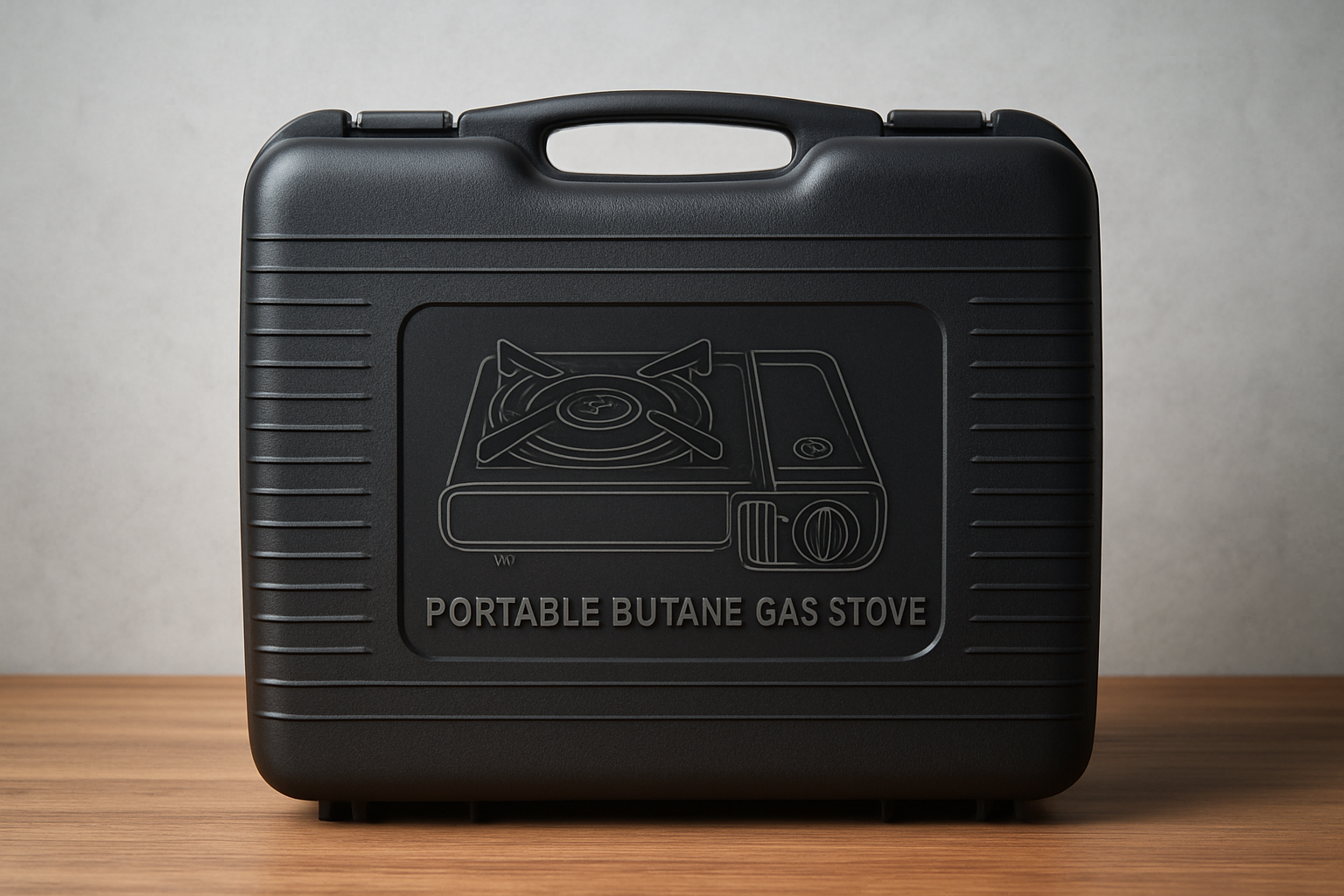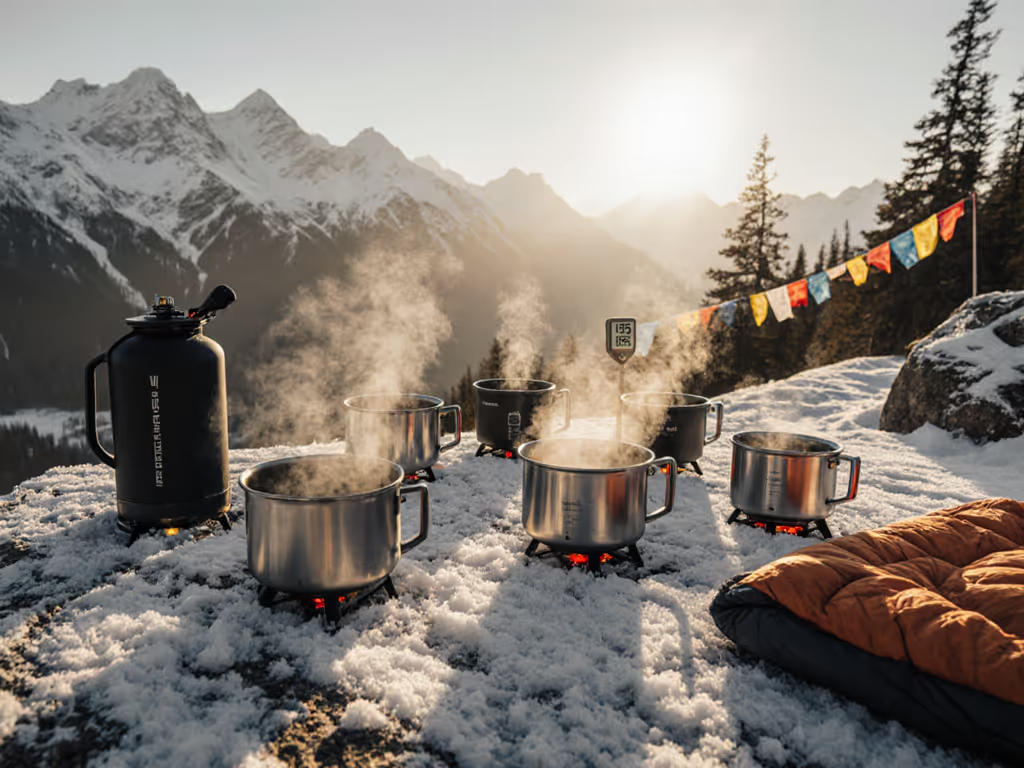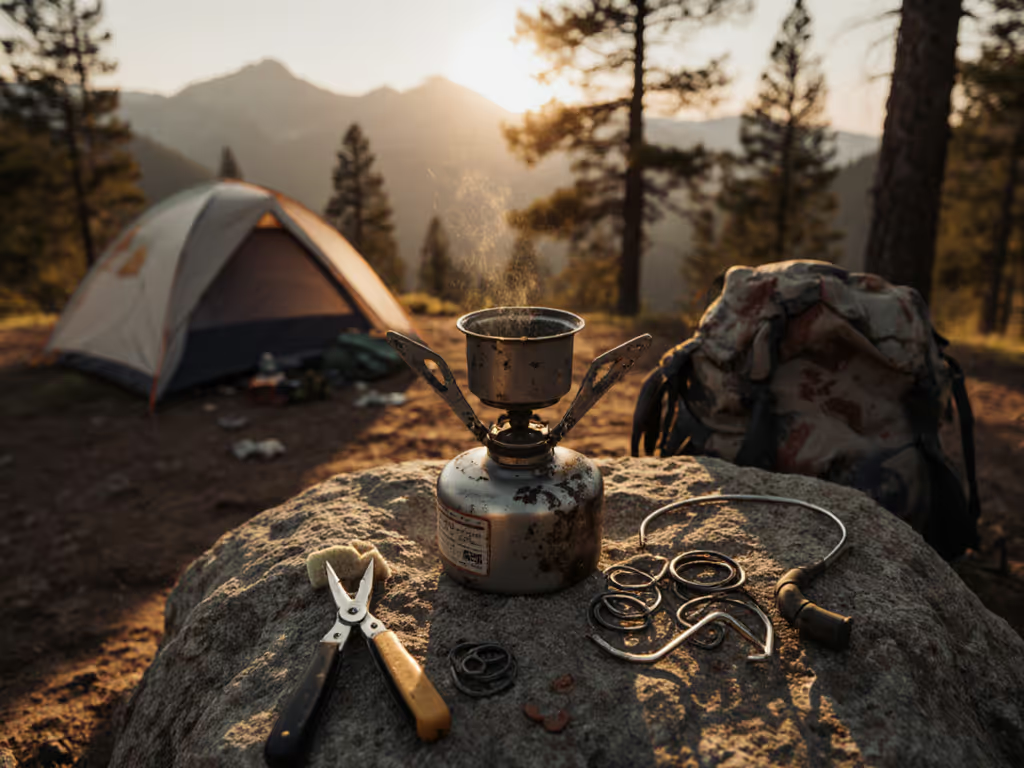Choosing the right gas one portable butane gas stove carrying case can be the difference between a carefree campsite breakfast and a frustrating morning of bent pot supports and soggy igniters. Your stove is the heartbeat of trail meals and family feasts, so protecting it deserves real attention. Yet cases vary widely in size, padding, weather resistance, and organization. How do you make sense of the options without overpaying or hauling unnecessary weight?
At Heatinerary, we evaluate stove systems where they matter most: on trips. We test how cases safeguard gear through car rides on washboard roads, backpacking descents, shoreline carries, and surprise rain. And when conditions turn cold or windy, our Trip-Tuned Stove Lab for precise stove, fuel, and cookware matching connects the dots between your route, season, and gear choices. In the guide below, you will get clear criteria, practical examples, and comparison tables to pick a case that serves your adventures.
Why Your Carrying Case Choice Matters in the Wild
Think of a carrying case as a dedicated travel insurance policy for your stove. It shields delicate parts like the piezoelectric igniter, regulator, and pot supports from blunt impacts and abrasion. It also keeps grit, sand, and dust out of the burner ports, which helps maintain an even flame pattern and dependable simmer control. On bumpy roads or in checked duffels for non-fuel travel, structure and padding can prevent misalignment that leads to hard-to-diagnose performance hiccups.
Weather matters too. Rain and condensation sneak into seams, softening cardboard retail boxes and corroding steel over time. A thoughtfully designed case reduces moisture exposure with treated fabrics and tight closures, and it contains spills from fuel accessories so grime does not migrate to cookware. Meanwhile, smart interior organization keeps lighters, matches, wind screens, and small repair parts from rattling against the stove body, which reduces noise and damage.
If you often camp in colder shoulder seasons, remember that butane loses vapor pressure as temperature drops. For a deeper look at cold-weather fuel behavior, read our propane vs butane vs white gas analysis. While the stove performance depends on fuel and design, the case determines whether your setup arrives intact and ready to operate. A cracked latch or torn handle can cascade into last-minute fixes at the trailhead. Choosing a durable, well-fitting case is a simple step that pays off over years of trips.
Key Features to Look For in a Gas One Portable Butane Gas Stove Carrying Case
Let us get specific about what separates an okay bag from a great one. Start with fit: measure your stove’s length, width, and height, then add at least half an inch of clearance in each dimension to account for padding and easy loading. Too tight is risky for hinges and knobs, while too loose allows jarring movement. Next, consider structure. A semi-rigid shell made from ethylene-vinyl acetate or thermoplastic polyurethane resists crushing inside car trunks, whereas soft woven nylon with foam is quieter and easier to pack in a backpack.
Watch This Helpful Video
To help you better understand gas one portable butane gas stove carrying case, we've included this informative video from TheOutdoorGearReview. It provides valuable insights and visual demonstrations that complement the written content.
Hardware is another tell. Robust zippers, double stitching, and reinforced handles handle repeated lifts at awkward angles. Weather resistance is useful in variable climates: durable water repellent fabric and covered seams reduce leaks during short showers. Inside, look for a separate pocket or sleeve for a lighter, a small repair kit, and a thin windscreen. A vented grommet can help dissipate odor if residual fuel smell enters the bag, but never store a connected canister. Finally, evaluate total weight so it matches your carry style and trip length.
- Fit tolerance: at least 0.5 to 1.0 inch clearance in each dimension.
- Structure: semi-rigid shell for vehicle and hard-use trips; soft padded bag for backpacking simplicity.
- Materials: woven nylon with closed-cell foam; ethylene-vinyl acetate shell; acrylonitrile butadiene styrene plastic hard case.
- Weather: durable water repellent fabric and storm flaps over zippers for short rain exposure.
- Organization: interior sleeve for lighter and matches; flat pocket for windscreen; small pouch for repair kit.
- Carry options: padded handle and removable shoulder strap; anchor points for lashing to a pack or rack.
- Care: wipe-clean lining; abrasion-resistant base panel.
Common Case Types Compared
| Case Type | Typical Materials | Weather Resistance | Protection Level | Empty Weight Range | Best For | Watch Outs |
|---|
| Hard Case | Acrylonitrile butadiene styrene plastic shell; metal hinges; snap latches | Good against splashes; seams are not fully sealed | High crush resistance; strong corner protection | 2 to 4 pounds | Vehicle-based camping; loaner or school programs; gear closets | Bulkier; latches can crack if overloaded or dropped at low temperatures |
| Semi-Rigid Case | Ethylene-vinyl acetate or thermoplastic polyurethane shell; padded lining | Very good with durable water repellent coatings | Medium-high; distributes impacts well | 1.2 to 2.5 pounds | Mixed travel with some hiking; shoulder season trips | Can trap odor if not aired; confirm venting or routinely dry out |
| Soft Padded Bag | Woven nylon or polyester with closed-cell foam | Good if treated with durable water repellent | Medium; protects from scuffs and minor bumps | 0.8 to 1.8 pounds | Backpacking and space-limited packing; quieter in transport | Less crush resistance; choose thicker foam for vehicle travel |
Fit and Compatibility: Matching Cases to Popular Gas One Models
Gas One single-burner stoves share a similar footprint, but height, control knob placement, and grates vary by model. The surest path is to measure your specific stove and then confirm interior case dimensions. If you are replacing a broken stock clamshell, consider whether a softer or semi-rigid alternative would better match how you pack today. For dual fuel stoves with slightly different burners, extra wiggle room reduces stress on the regulator and piezoelectric assembly during loading.
As a general rule, standard single-burner butane stoves benefit from an interior case size in the range of roughly 14 by 12 by 5 inches. Slimline models may fit in something closer to 12 by 11 by 4 inches. Dual fuel variants with integrated wind baffling or taller grates often want a bit more headroom. Remember to plan space for a flat windscreen and a small tool pouch inside the case, or keep those in an exterior pocket if available.
Case Fit Guidelines by Gas One Stove Class
| Gas One Stove Class (Examples) | Typical Stove Size Range (inch) | Recommended Interior Case Size (inch) | Suggested Case Style | Notes |
|---|
| Standard single-burner butane (GS-1000, GS-1500, GS-3000 class) | 13 to 14 L × 11 to 12 W × 4 to 5 H | 14 to 15 L × 12 to 13 W × 5 to 6 H | Semi-rigid or soft padded bag | Add a flat sleeve for windscreen; choose padded handle for car camps |
| Dual fuel compact (GS-3400P class) | 13.5 to 14.5 L × 11 to 12 W × 4 to 5 H | 15 to 16 L × 12.5 to 13 W × 5.5 to 6 H | Semi-rigid with thicker corner foam | Extra headroom prevents knob abrasion during loading |
| High-output single-burner (GS-3900P class) | 13 to 14 L × 10.5 to 11.5 W × 4 to 5 H | 14.5 to 15.5 L × 12 W × 5.5 to 6 H | Hard case for school or rental programs | Higher heat output stoves benefit from sturdier storage during transport |
| Slimline ultralight butane (GS-800 class) | 11 to 12 L × 10 to 11 W × 3 to 4 H | 12.5 to 13.5 L × 11.5 to 12 W × 4.5 to 5 H | Soft padded bag | Ideal for backpacking and compact car kitchens |
Use this quick measurement routine to eliminate guesswork before you buy:
- Measure the stove’s maximum length, width, and height, including any protruding knobs and the highest grate point.
- Add at least half an inch to each number for protective padding and easy stowing.
- If you will store a windscreen or lighter inside, add extra height or ensure there is an accessory pocket.
- Simulate loading by wrapping your stove in a towel and sliding it into a cardboard mockup cut to the interior dimensions you are considering.
Packing Systems and Real-World Scenarios

Different trips call for different case priorities. Car campers might value crush resistance and organization, while backpackers prize low weight and quiet, soft-sided materials. For a full breakdown of backpacking versus car camping stove systems, see our comparative guide. Overlanders and paddlers often want lash points, a reinforced base, and fabric that shrugs off rain or spray. As you think through your use cases, also factor in who cooks with you. Family trips with lots of hands around the kitchen often benefit from a more structured case that makes repacking obvious.
Here are three snapshots from the trail and road. On a weekend ridge camp with light winds, a slim soft bag fits neatly behind a backpack frame, and the quiet foam keeps clanking to a minimum. For a long highway approach on corrugations to a desert campsite, a semi-rigid shell prevents the stove from slowly rubbing through its own support edges. During a shoulder-season family gathering with intermittent drizzle, a water-resistant case with a storm-flapped zipper helps your breakfast routine stay calm.
Trip Scenario to Case Feature Priorities
| Scenario | Typical Conditions | Top Case Features | Suggested Case Type | Packing Notes |
|---|
| Backpacking overnighter | Dry to mixed weather; moderate mileage | Low weight; soft padding; quiet materials; slim profile | Soft padded bag | Carry the fuel canister separately and upright in an outside pocket |
| Car camping weekend | Mixed road quality; occasional rain | Semi-rigid structure; durable water repellent fabric; padded handle | Semi-rigid case | Add a small organizer for lighter, windscreen, and repair kit |
| Overlanding on washboard roads | Long vibration; dust and grit | Crush resistance; sealed seams; lash points; reinforced base | Hard case or semi-rigid with stiff frame | Line the base with thin closed-cell foam to damp vibration |
| Shoulder-season family camp | Cool mornings; intermittent drizzle | Water-resistant fabric; storm flaps; easy one-handed handle | Semi-rigid case | Dry the stove before stowing to reduce corrosion over time |
| Paddling to island camp | Spray; short carries | Water resistance; strap anchors; non-slip base | Semi-rigid case | Pack in a deck bag or under bungees; keep fuel in a separate dry bag |
What should you store inside the case with the stove? Keep it simple. A butane canister travels safer and cleaner in its own upright sleeve or pouch, not attached to the stove. Add a small zip pouch with matches, a lighter, and a compact repair kit that includes a screwdriver, a few spare screws, and a short length of heat-resistant tape. If you carry a folding windscreen, ensure it has a dedicated sleeve that does not scratch the stove body.
Safety, Regulations, and Care for Butane Gear
Safety starts with separation. Do not transport a fuel canister attached to a stove, even inside a case. Keep canisters upright and away from heat sources like rear window areas in cars. If a canister shows dents, rust, or valve damage, retire it immediately. And although your case may resist moisture, always dry the stove after wet weather to prevent long-term corrosion.
Regulations vary by country and carrier. As a rule, fuel canisters are not permitted on passenger aircraft. Empty stoves without fuel can usually travel in checked baggage if thoroughly cleaned and aired to remove any fuel odor; confirm with the airline before flying. During vehicle travel, never leave the case in direct sun for extended periods, and avoid storing near heaters or inside sealed containers with solvent-based cleaners.
Cooking safety extends beyond the case. Use your stove in a well-ventilated area and never inside enclosed tents or vehicles, because carbon monoxide can accumulate quickly and is dangerous. Review our camp stove safety guide for ventilation tips and CO precautions. In windy conditions, pair your case choice with a safe windscreen that does not enclose the canister. Finally, perform a quick pre-trip check: confirm all screws are snug, the igniter clicks reliably, and the pot supports are not bent.
How Heatinerary Helps You Decide: The Trip-Tuned Stove Lab Advantage
Many shoppers ask a fair question: why does a cooking site care so much about cases? Because in the real world, protection and packing influence whether your stove lights the first time and keeps a steady flame when you need it most. Heatinerary exists to remove guesswork for campers who plan trips around variable weather and terrain. Our Trip-Tuned Stove Lab for precise stove, fuel, and cookware matching takes your route, elevation, forecast, and group size, and translates them into a practical setup you can trust.
Here is how that looks in practice. For a windy fall coastal route, the lab might recommend a semi-rigid case with a storm-flapped zipper and a separate upright pouch for canisters, paired with a stove model that handles gusts and a cookware set with lids that reduce boil time. For a high-elevation family weekend, you might see guidance to choose a structured case so multiple people can repack the stove correctly, a fuel strategy that accounts for cooler mornings, and a windscreen that improves simmer stability without enclosing the canister. If your trips reach 10,000 feet or more, check our high-altitude stove testing for performance insights.
Beyond case guidance, Heatinerary’s reviews and how-to articles compare stove fuels in deep winter performance, analyze cooking efficiency at different elevations, and help you choose between family-friendly and backpacking-focused options. The result is a system-level recommendation, not just a list of parts. If you are replacing a broken stock clamshell, our editors will help you decide whether that original hard case still fits your travel style or whether a modern padded bag better protects your investment with less weight.
Budget, Value, and a Shortlist You Can Trust

Price should track with how hard you are on gear. If you primarily car camp on smooth roads and store your stove on a shelf at home, a well-made soft padded bag can last for years at a modest cost. If you often bounce along washboard roads, stack bins in a truck bed, or share gear with a scout troop, a semi-rigid or hard case pays for itself in reduced breakage. Either way, value rises with better stitching, quality handles, and fabrics you can wipe clean.
Use the quick shortlist below to align your needs, then refine by exact fit using the earlier size guidelines. The point is not to buy the most expensive case, but to buy the one that matches how you actually travel and cook. As conditions shift throughout the year, revisit your choice. You may keep both a lightweight soft bag for overnight hikes and a sturdier semi-rigid shell for family road trips; switching takes seconds and extends the life of your stove.
Case Shortlist by Use Profile
| Use Profile | Recommended Case Type | Why It Works | What to Check Before Buying |
|---|
| Mostly car camping, occasional short hikes | Semi-rigid case | Balances crush protection with manageable weight | Interior height for grates; comfortable handle for long carries |
| Backpacking and minimalist travel | Soft padded bag | Light, quiet, easy to stuff in a pack | Foam thickness; pocket for lighter and matches |
| Shared gear, rentals, and school programs | Hard case | Durable, stackable, easy to label | Latch robustness; hinge materials; spare latch availability |
| Wet or dusty environments | Semi-rigid with treated fabric | Better water resistance and abrasion protection | Covered zipper path; wipe-clean lining to manage grime |
Putting It All Together: A Simple Selection Process
Ready to decide? Start by listing your top two trip types for the next six months. Measure your stove, pick a case style that matches those trips, and choose the smallest interior size that provides safe clearance plus space for a lighter and windscreen. Next, weigh the empty case and hold it by the handle for a minute; comfort matters more than you think when your other hand is juggling a cooler or a child’s hand at the campsite.
Then sanity-check weather and storage. If you expect rain, prioritize water-resistant fabric and a covered zipper path. If you will store the stove in a garage or gear closet, choose a wipe-clean lining to control grime. Finally, practice packing at home so the system becomes muscle memory. A few minutes now will save you time when the wind is up and dinner is calling.
A quick note on performance planning: while the case protects your stove, heat output and cold-weather reliability depend on fuel and stove design. Butane performs best above the freezing point, whereas cold-resistant blends and remote canister options extend into chillier mornings. Heatinerary’s Trip-Tuned Stove Lab for precise stove, fuel, and cookware matching ties these variables together for your actual route and forecast, so your case choice complements a cooking system that simply works.
Conclusion
Pick the right case once, and your stove arrives ready to light every single time. Imagine a season of breakfasts where your gear is quiet, organized, and dry, whether you drive dusty roads or shoulder a pack at dawn.
In the next 12 months, you can build a simple, reliable kitchen kit that fits your trips and your budget. Which case, fuel, and cookware pairing will turn your gas one portable butane gas stove carrying case into a confidence-boosting system?
Additional Resources
Explore these authoritative resources to dive deeper into gas one portable butane gas stove carrying case.
Perfect Your Gas One Case Choice with Heatinerary
Heatinerary’s Trip-Tuned Stove Lab gives campers and backpackers tailored stove, fuel, and cookware choices by route and season, ensuring safe, efficient cooking in any conditions.
Match My Setup








